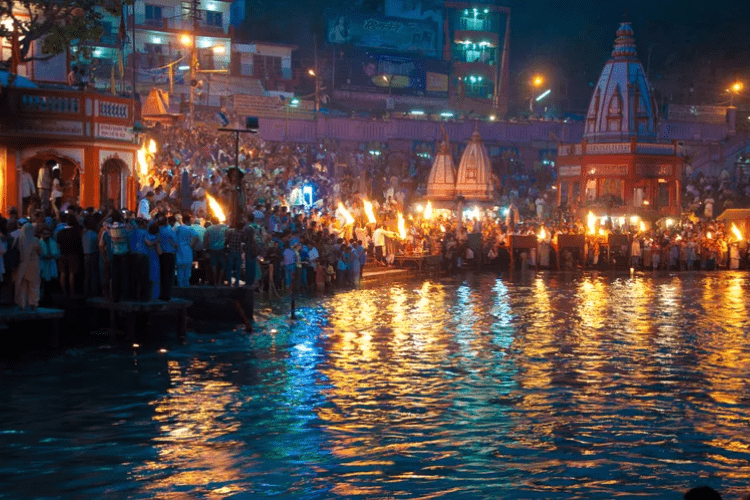
The Maha Kumbh Mela is one of the largest and most significant religious gatherings in the world. This Hindu festival, celebrated once every 12 years, attracts millions of devotees to Prayagraj, a city in northern India, where the sacred rivers Ganga, Yamuna, and the mythical Saraswati meet. The festival, which begins today, is expected to draw an astounding 400 million people over the next six weeks—a figure surpassing the total population of the United States. This year’s event is a striking testament to India’s ability to host a gathering of such magnitude, marked by extensive planning, religious fervor, and cultural significance.
The Significance of the Maha Kumbh Mela
The Maha Kumbh Mela is deeply rooted in Hindu mythology and spirituality. According to legend, the festival is linked to the ancient story of the Samudra Manthan, or the churning of the ocean of milk, where gods (devas) and demons (asuras) worked together to extract the nectar of immortality (amrita). A fierce battle ensued over the nectar, and in the process, a few drops fell at four sacred locations: Prayagraj, Haridwar, Ujjain, and Nashik. These sites became the locations for the Kumbh Mela, which rotates among them, with the Maha Kumbh occurring exclusively in Prayagraj.
Bathing at the confluence of the rivers during the Kumbh Mela is believed to cleanse individuals of their sins and grant them spiritual liberation (moksha). The event is a profound demonstration of faith, with millions of devotees braving crowds and challenges to seek divine blessings.
The Scale of the 2025 Maha Kumbh Mela
The 2025 Maha Kumbh Mela has garnered unprecedented attention due to its sheer scale. Authorities have left no stone unturned in preparing for the influx of pilgrims, sadhus (holy men), and tourists. A massive temporary city has been erected on the banks of the Sangam (the confluence of the rivers). The city includes:
•150,000 tents to accommodate visitors.
•145,000 restrooms, ensuring basic sanitation for attendees.
•99 parking lots, addressing the logistical challenges of managing millions of vehicles.
Beyond these numbers, authorities have built hundreds of kilometers of roads, bridges, and other infrastructure to handle the flow of pilgrims. Advanced technology, such as drones and CCTV cameras, is being used for crowd management and security.
Religious Practices and Rituals
The Maha Kumbh Mela is marked by a series of auspicious bathing dates, known as Shahi Snans (Royal Baths), when millions take a dip in the holy waters. These dates are determined by astrological alignments and are considered the most spiritually potent moments of the festival.
Another key aspect of the Mela is the participation of sadhus from various Hindu monastic orders, including the Naga Sadhus, known for their asceticism and practice of living without material possessions. These sadhus lead processions to the river, creating a vibrant spectacle with their chants, colors, and rituals.
Pilgrims also engage in other spiritual activities, such as attending discourses by renowned spiritual leaders, offering prayers, and performing rituals to honor their ancestors. The atmosphere is one of devotion, reflection, and unity.
Culture
The Maha Kumbh Mela is not just a religious event; it is also a cultural and economic phenomenon. The festival showcases India’s rich heritage, attracting visitors from across the globe. Tourists and photographers come to witness the grandeur, making the Kumbh Mela an important event in the global cultural calendar.
Economically, the festival is a significant boost for the local and national economy. Temporary employment opportunities are created in sectors like hospitality, transportation, and retail. Vendors selling food, clothing, and religious items benefit from the massive footfall. The government’s investment in infrastructure for the event also has long-term benefits for the region.
Challenges and Management
Hosting an event of this scale comes with immense challenges. Crowd management is a critical issue, as a single mishap could lead to stampedes. To address this, authorities have deployed thousands of security personnel and implemented advanced crowd-control measures. Technology plays a vital role, with real-time monitoring and communication systems ensuring that authorities can respond promptly to any issues.
Sanitation is another significant challenge, given the number of attendees. The construction of over 145,000 restrooms is a testament to the government’s commitment to maintaining hygiene.
Healthcare services are also a priority. Temporary hospitals and medical camps have been established, staffed with doctors, nurses, and paramedics to handle any emergencies. Mobile health units and ambulances are on standby to assist pilgrims.
Environmental sustainability is a concern, particularly regarding the health of the rivers. Efforts have been made to ensure that the rivers remain clean, with measures such as wastewater treatment and public awareness campaigns about pollution prevention.
The Spiritual Experience
For the millions who attend, the Maha Kumbh Mela is a deeply transformative experience. It is a journey of faith, where individuals from diverse backgrounds come together in the pursuit of spiritual growth. The sight of devotees immersing themselves in the sacred waters, chanting prayers, and seeking blessings is profoundly moving.
The festival also provides an opportunity for self-reflection and connection with the divine. Many attendees describe the Kumbh Mela as a life-changing event that strengthens their faith and deepens their understanding of spirituality.
Global Attention and Recognition
The Maha Kumbh Mela has gained international recognition for its cultural and religious significance. In 2017, UNESCO inscribed the Kumbh Mela on its list of Intangible Cultural Heritage of Humanity, highlighting its importance as a living tradition that fosters community and spiritual harmony.
No comments yet.








